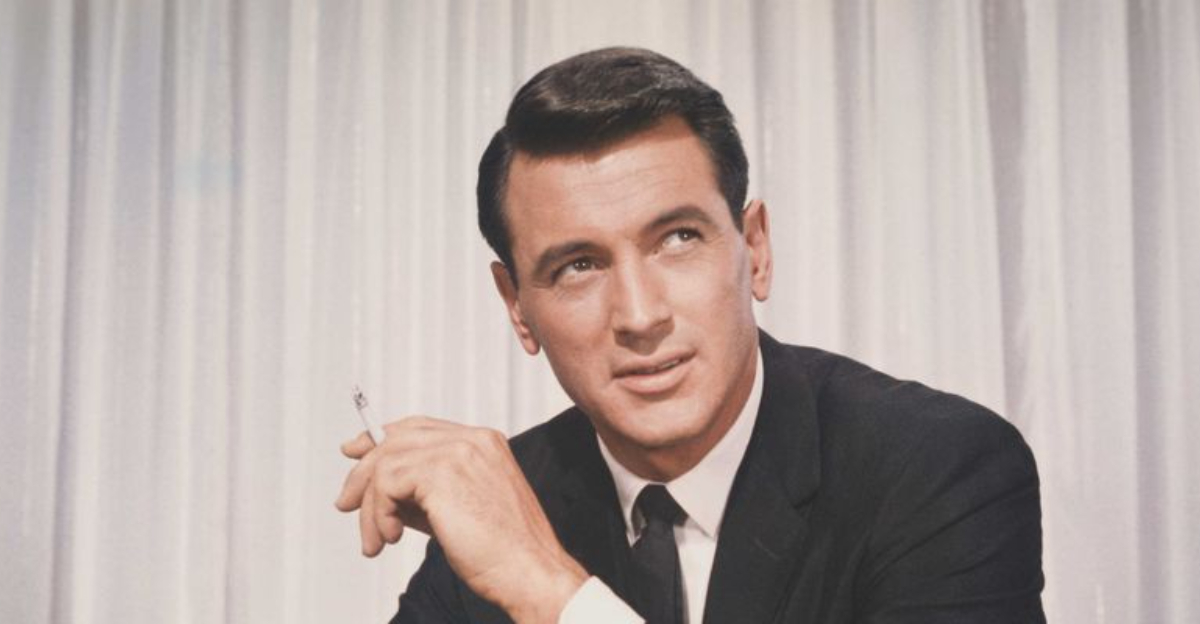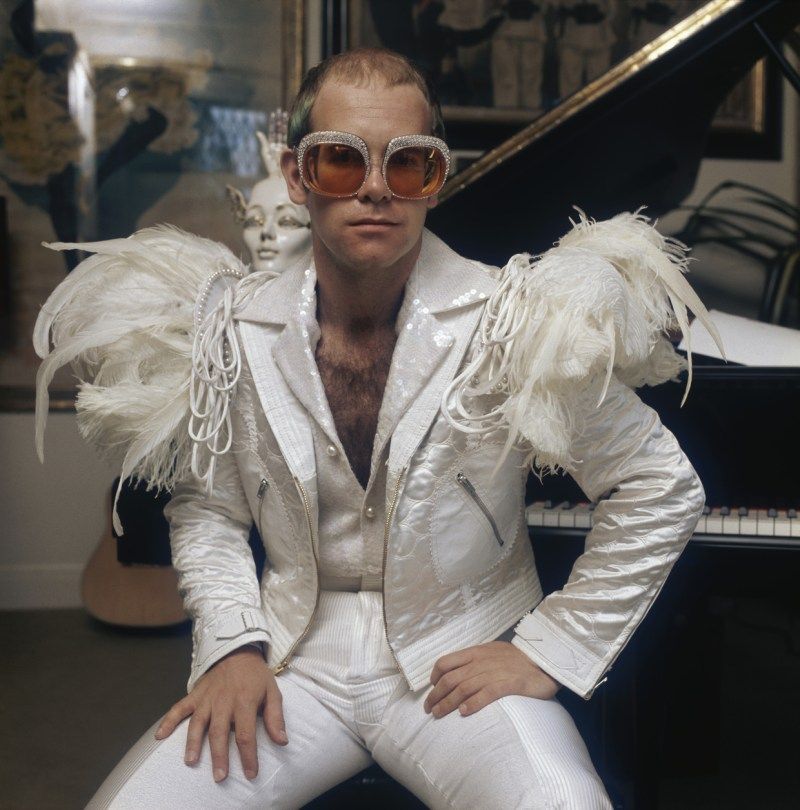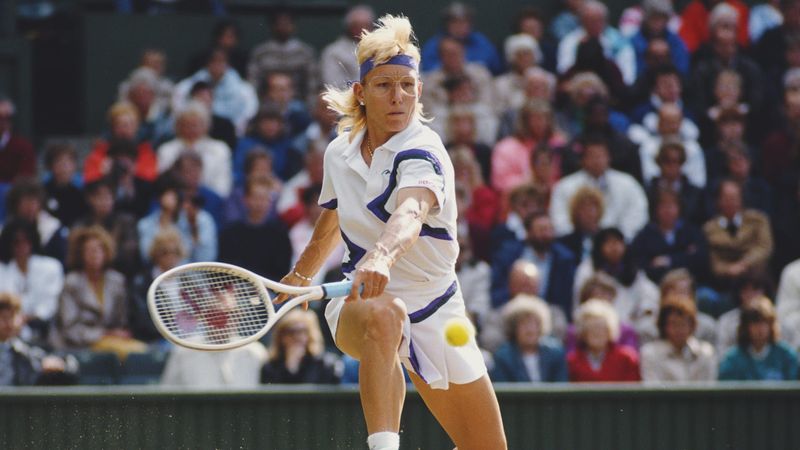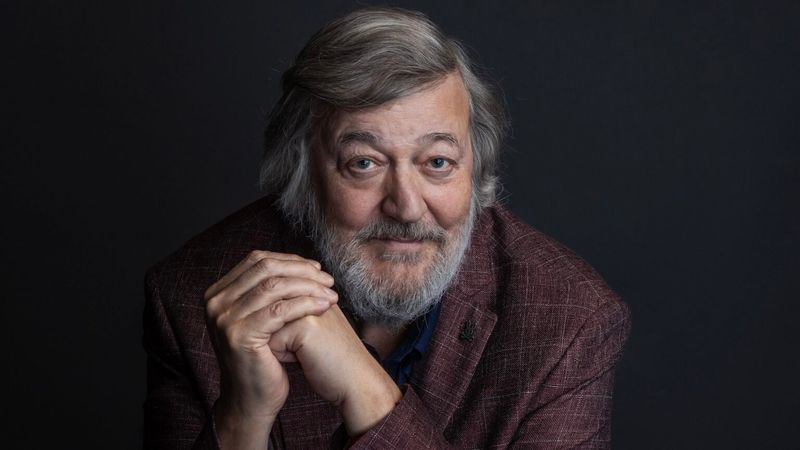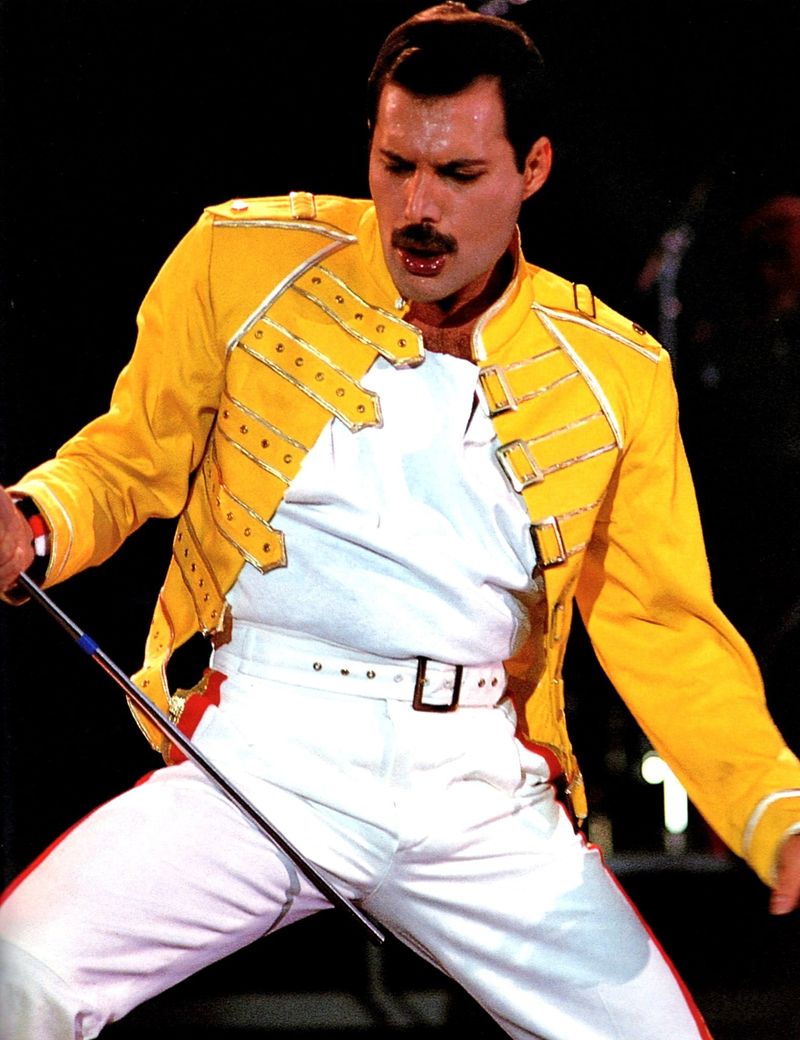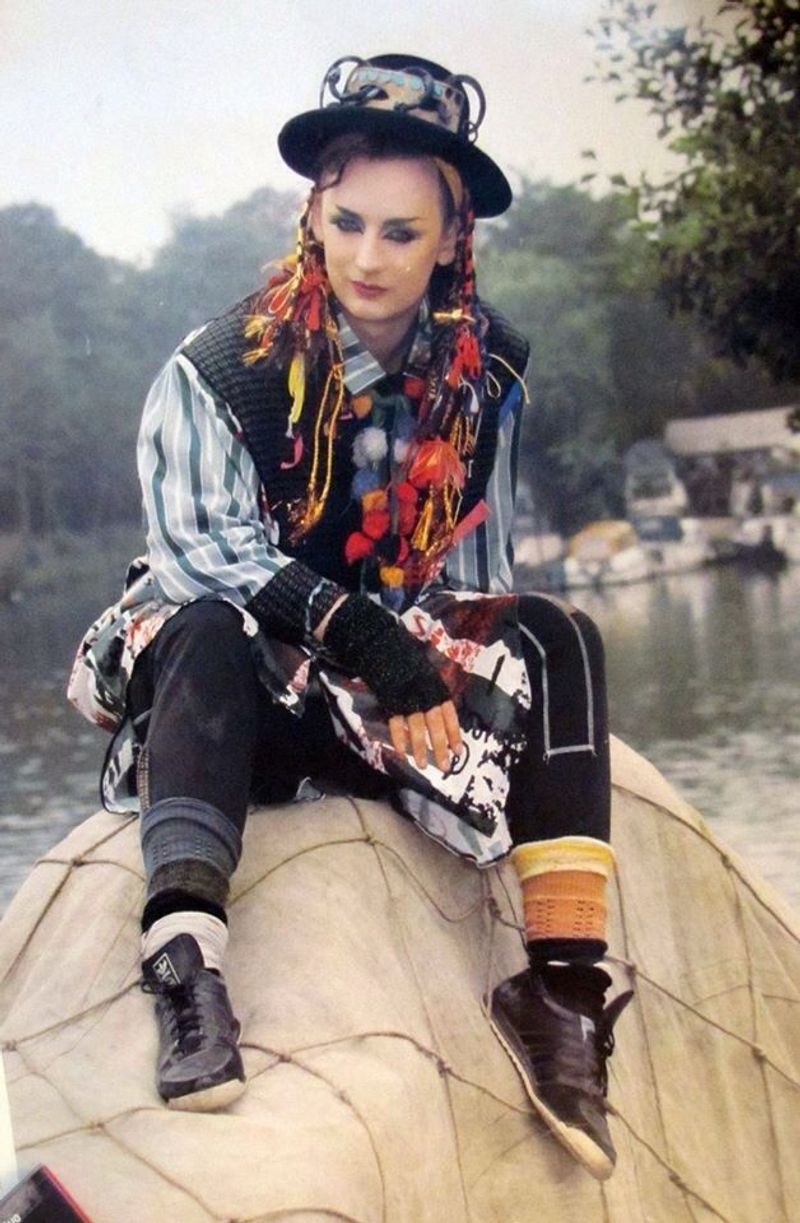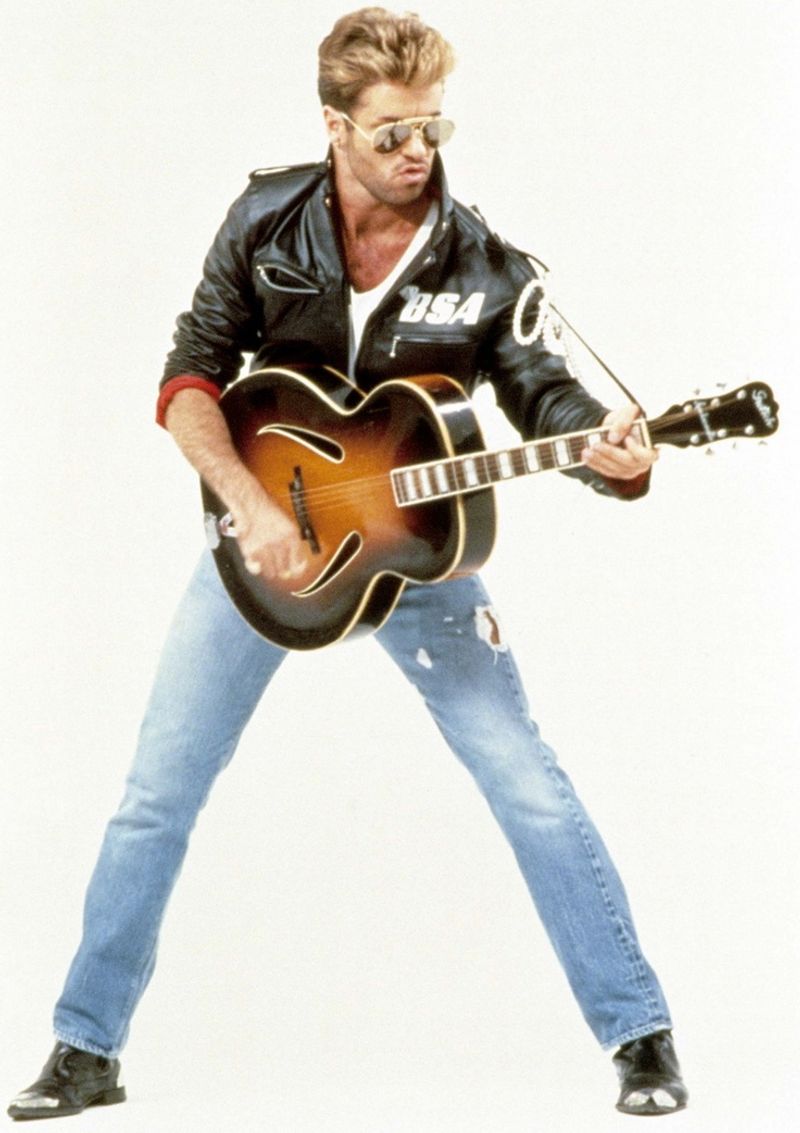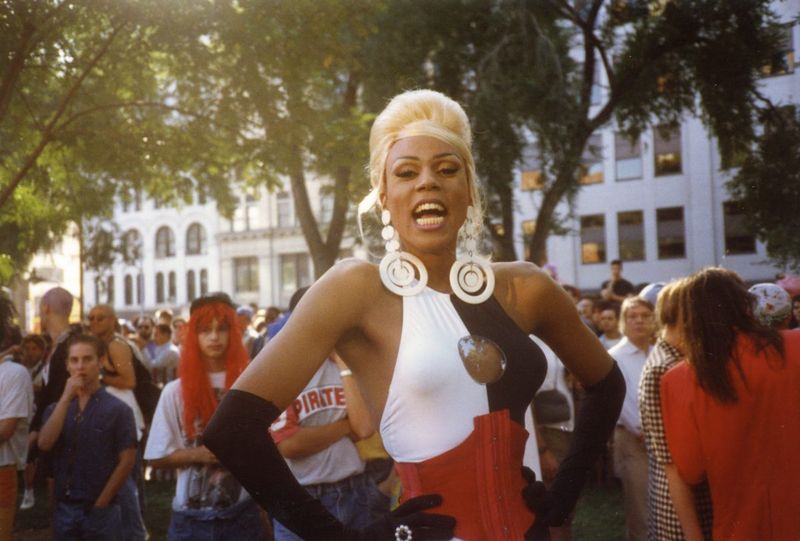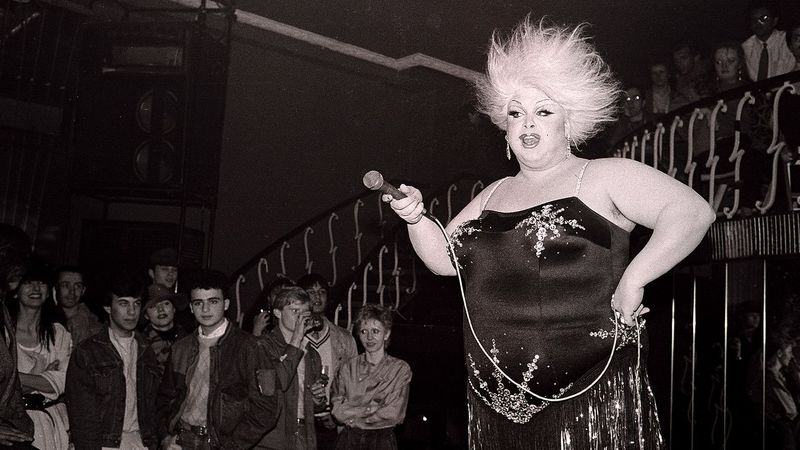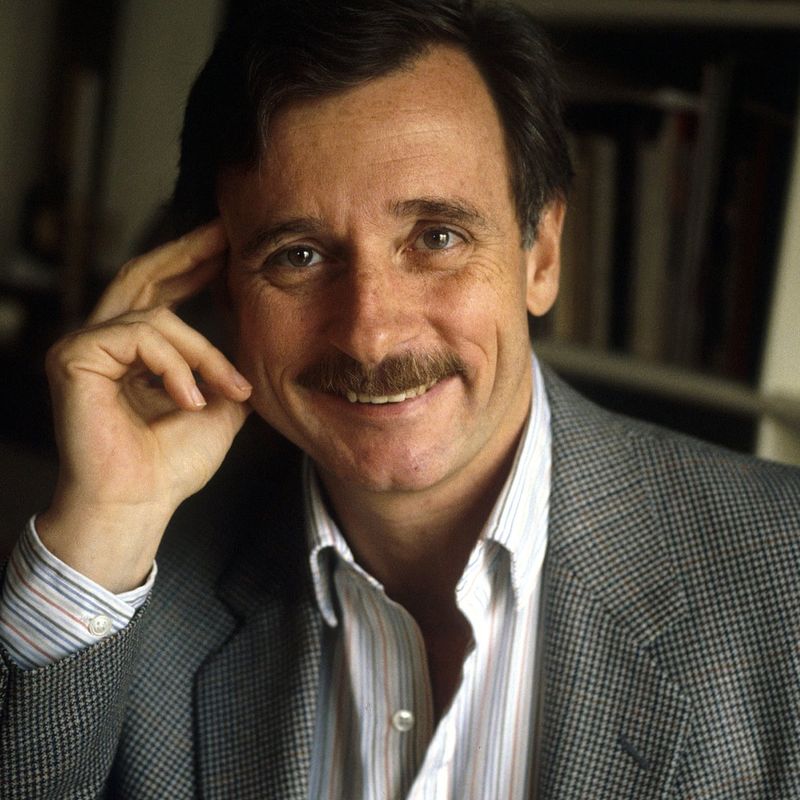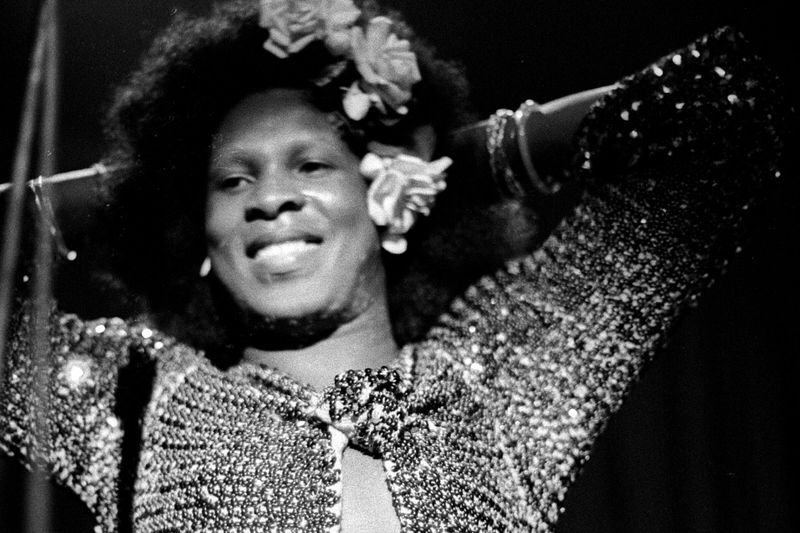The 1980s marked a pivotal time for LGBTQ+ visibility in entertainment and beyond. During this decade, brave celebrities began stepping into their authentic selves despite tremendous social pressure and career risks. These trailblazers faced the devastating AIDS crisis, discriminatory laws, and public scrutiny, yet their courage helped change attitudes and inspired generations to come.
1. Elton John: The Rocket Man’s Truth
Initially coming out as bisexual in 1976, Elton John fully embraced his gay identity in 1988, becoming a musical pioneer who refused to hide. His flamboyant costumes and energetic performances captivated audiences worldwide while his personal journey reflected the complex reality many faced.
Throughout the 80s, his music continued topping charts even as he struggled privately with substance abuse and questions about his sexuality. His eventual openness helped normalize LGBTQ+ presence in mainstream music.
The legendary pianist later established the Elton John AIDS Foundation, channeling his stardom into vital advocacy work that has raised hundreds of millions for research and support.
2. Ian McKellen: From Stage to Advocacy
A thunderous voice for equality emerged when respected actor Ian McKellen publicly came out during a 1988 BBC Radio interview. His announcement, made while fighting against discriminatory legislation in Britain, transformed him from beloved thespian to vital activist overnight.
McKellen co-founded Stonewall UK, an organization that continues fighting for LGBTQ+ rights today. His courage was particularly remarkable considering his classical theater background and the conservative nature of British institutions at the time.
Rather than hindering his career, McKellen’s authenticity seemed to fuel it, proving that living truthfully could lead to both personal and professional fulfillment despite societal prejudice.
3. Martina Navratilova: Champion On and Off the Court
When tennis superstar Martina Navratilova came out as gay in 1981, she risked everything at the peak of her athletic prowess. Sponsorships vanished overnight, but her determination never wavered as she continued dominating women’s tennis throughout the decade.
Her muscular physique and aggressive playing style challenged traditional notions of femininity in sports. Meanwhile, her openness about her sexuality provided crucial visibility during a time when few professional athletes dared to come out.
Originally from Czechoslovakia, Navratilova became an American citizen in 1981, the same year she publicly embraced her identity, making her journey one of both personal and national transformation.
4. Stephen Fry: Wit and Wisdom
Stephen Fry burst onto British television in the 1980s with his razor-sharp intellect and distinctive comedic style. Working alongside Hugh Laurie and Emma Thompson, he never hid his sexuality, a remarkable stance during a decade of increasing homophobia.
His Cambridge education and upper-class English demeanor helped him navigate entertainment circles while being openly gay. Fry’s refusal to play stereotypical roles or hide his authentic self made him a quiet revolutionary in British comedy.
Years later, he would become an outspoken mental health advocate, revealing his struggles with bipolar disorder and creating a powerful intersection of LGBTQ+ and mental health visibility that began with his honest presence in the 80s.
5. Freddie Mercury: Rock’s Flamboyant Genius
Strutting across stages in leather and sequins, Freddie Mercury embodied theatrical rock stardom while maintaining a complex relationship with his sexuality. Though private about his personal life, his onstage persona challenged gender norms through elaborate costumes and explosive performances.
Mercury never publicly labeled his sexuality, yet his relationships with both men and women have cemented his status as a bisexual icon. His band Queen dominated 80s rock with anthems like “Radio Ga Ga” and their legendary Live Aid performance.
Tragically, Mercury would become one of the decade’s most famous AIDS casualties, passing in 1991 after keeping his diagnosis private until the very end—a reflection of the era’s devastating stigma.
6. Boy George: Culture Club’s Colorful Revolutionary
Nobody embodied 80s gender-bending quite like Boy George, whose colorful makeup, flowing outfits, and distinctive voice made him an instant sensation. His band Culture Club topped charts worldwide with hits like “Karma Chameleon” while George’s androgynous appearance sparked conversations about gender and sexuality.
Growing up in working-class London, George O’Dowd transformed himself into a glamorous icon who refused categorization. When asked about his sexuality in interviews, he famously preferred talking about “a cup of tea” instead, challenging the public’s need to label and define.
His visual aesthetic influenced fashion beyond music, inspiring countless fans to experiment with their own self-expression during an otherwise conservative decade.
7. George Michael: Pop Star with Hidden Depths
Before publicly coming out in the late 1990s, George Michael spent the 1980s crafting perfect pop songs while navigating his sexuality privately. As half of Wham! and later as a solo artist, his soulful voice and model-worthy looks made him a global heartthrob.
Behind the carefully crafted image lay a young man struggling with his identity during a hostile era. Songs like “Freedom ’90” hinted at his internal conflict, though most fans wouldn’t recognize the clues until years later.
Despite keeping his personal life guarded, Michael’s music resonated deeply within LGBTQ+ communities, with dance-floor anthems that became soundtrack staples at gay clubs throughout the decade.
8. Larry Kramer: The Necessary Agitator
While celebrities performed on stages, playwright Larry Kramer fought for survival itself. His 1985 play “The Normal Heart” brought the AIDS crisis to mainstream audiences when government and media remained silent about the epidemic ravaging gay communities.
Kramer co-founded the Gay Men’s Health Crisis in 1981 and later formed ACT UP, pioneering direct-action protests that forced medical and political establishments to address the crisis. His confrontational style alienated some but saved countless lives through accelerated drug approvals and increased funding.
Unlike many on this list, Kramer never softened his message for mainstream acceptance, believing that righteous anger was the only appropriate response to institutional neglect.
9. RuPaul: Before the Drag Race
Before becoming a household name, RuPaul Charles was cutting his teeth in Atlanta’s underground club scene and New York’s drag balls during the 1980s. Towering at nearly seven feet in heels, his early performances blended punk sensibilities with glamorous drag aesthetics.
RuPaul’s early career included appearing in low-budget films and performing with his band Wee Wee Pole. These formative years shaped his philosophy of self-creation and authenticity that would later revolutionize drag entertainment.
Unlike many drag performers of the era who aimed for female illusion, RuPaul often incorporated gender-bending elements, creating a distinctive style that challenged traditional drag while celebrating its roots.
10. Divine: The Original Drag Provocateur
Harris Glenn Milstead transformed into Divine and shattered every boundary of taste and propriety in John Waters’ cult films. With his trademark arched eyebrows, skin-tight dresses, and outrageous behavior, Divine created a drag persona that was equal parts glamorous and grotesque.
Far from seeking mainstream acceptance, Divine reveled in shocking audiences. His performances challenged not just gender norms but notions of beauty, decency, and art itself during the conservative Reagan era.
Just as his career reached new heights with 1988’s “Hairspray,” Divine passed away suddenly at 42, leaving behind a revolutionary legacy that influenced everything from punk aesthetics to future drag generations.
11. Rock Hudson: Hollywood’s Heartbreaking Revelation
Rock Hudson’s death from AIDS-related complications in 1985 sent shockwaves through America. The quintessential Hollywood leading man had kept his homosexuality secret throughout his career, maintaining a carefully constructed public image while privately living as a gay man.
His diagnosis and subsequent passing marked the first time many Americans connected a beloved celebrity face to the AIDS crisis. Former co-star Elizabeth Taylor became an AIDS activist partly because of her friendship with Hudson.
Hudson’s posthumous coming out highlighted the impossible choices many LGBTQ+ celebrities faced: live authentically and lose your career, or maintain a facade while denying your true self. His legacy remains a powerful reminder of an era’s cruel demands for secrecy.
12. Harvey Fierstein: Broadway’s Gravelly Voice for Equality
Harvey Fierstein’s unmistakable gravelly voice became Broadway’s conscience when his “Torch Song Trilogy” brought authentic gay relationships to mainstream theater in the early 1980s. Playing drag performer Arnold Beckoff, Fierstein created a character seeking the same love and family connections as anyone else.
Winning Tony Awards for both writing and performing, he refused to water down gay content for straight audiences. His follow-up musical “La Cage aux Folles” continued challenging audiences while wrapping its message in catchy tunes and emotional storytelling.
Fierstein’s characters weren’t tragic victims or comedic stereotypes but fully realized humans with hopes, flaws, and dignity—revolutionary portrayals during a decade when gay men were often depicted solely as AIDS victims.
13. Edmund White: Literature’s Unflinching Chronicler
While pop culture figures grabbed headlines, author Edmund White documented gay life with literary precision. His semi-autobiographical novel “A Boy’s Own Story” (1982) captured the experience of growing up gay in mid-century America with unprecedented honesty and beautiful prose.
White’s work gained significance against the backdrop of the AIDS crisis, which he addressed directly in his writing and through co-founding the Gay Men’s Health Crisis. Unlike sensationalized accounts, his stories portrayed gay men’s lives with dignity, complexity, and unflinching truth.
Living in Paris through much of the 1980s, White bridged American and European literary traditions while creating what would become foundational texts in the gay literary canon.
14. Klaus Nomi: The Alien Countertenor
Resembling an alien visitor more than a conventional performer, German-born Klaus Nomi merged opera with new wave music to create something entirely original. His stark black and white theatrical makeup, geometric costumes, and supernatural countertenor voice made him the ultimate outsider artist of early 1980s New York.
After gaining wider recognition performing with David Bowie on Saturday Night Live, Nomi developed his own cult following. His theatrical performances featured baroque arias alongside covers of pop songs, all delivered with his distinctive otherworldly presence.
Tragically, Nomi became one of the first celebrities to die from AIDS in 1983, cutting short a career that was just beginning to influence fashion, music, and performance art.
15. Sylvester: The Mighty Real Disco Legend
Sylvester James Jr. brought gospel-trained vocals to disco floors, creating anthems like “You Make Me Feel (Mighty Real)” that celebrated liberation through music and movement. Openly gay and gender-nonconforming when either could end a career, he performed in drag, suits, or glamorous androgynous outfits depending on his mood.
Born in Los Angeles, Sylvester found his spiritual home in San Francisco’s vibrant queer community. His falsetto voice and unapologetic flamboyance made him the soundtrack to countless nights of freedom in clubs across America.
Before his death from AIDS complications in 1988, Sylvester arranged for his royalties to fund AIDS organizations, ensuring his music would continue supporting his community long after he was gone.
